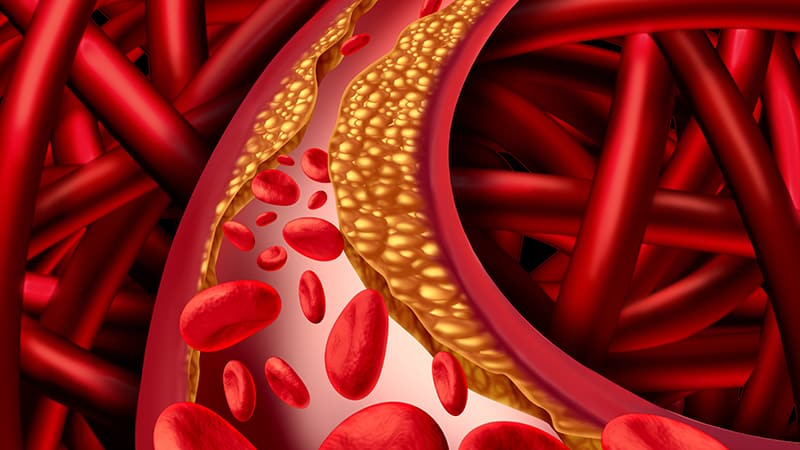Rates of ADHD, anxiety, and depression increase in our country by the day, while the rate of prescribed stimulants steadily rises. An estimated 1 in 20 children currently suffer from ADHD, and anxiety disorders are the most common mental illness in the US, affecting 18% of our 18 and older population. Children are also prone to anxiety, and it is estimated by the Anxiety and Depression Association of America that 1 in 8 children suffer from an anxiety disorder. Depression is also common, with the CDC estimating rates between 8%-12% of people over age 12. These trends are mirrored in the prescribing habits of American health care providers. In 2014, the antidepressant/anti-anxiety medication, Cymbalta, was the 6th most commonly prescribed medication. The attention deficit drug, Vyvance, was the 8th most commonly prescribed medication. Abilify, the antipsychotic drug used to augment anxiety and depression therapies, brought in the highest sales for 2014 at $6.9 billion.
As a health care provider trained to look for the root cause of illness, I am increasingly frustrated with reliance on pharmaceuticals to manage these conditions. These medications come with significant side effects. Stimulant medications for ADHD can dramatically alter children’s behavior, often causing irritability and anger. They can significantly interfere with sleep patterns and physical growth due to appetite suppression. Adults can experience similar side effects. The impact of these stimulants on cardiac function is also of great concern. Heart arrhythmias and cardiac stress are common side effects in adults taking ADHD medication. This is a significant risk, as heart disease is the number one killer of all Americans.
SSRI medications, commonly used to treat depression and anxiety, also come with serious risks. The most concerning is the increased suicidal and homicidal behavior in adolescents. In fact, GlaxoSmithKline was fined a landmark $3 billion dollars by the United States government for “publishing and distributing a misleading medical journal article that misreported that a clinical trial of Paxil demonstrated efficacy in the treatment of depression in patients under the age of 18.” The US Department of Justice report continues to state that “GSK did not make available data from two other studies in which Paxil also failed to demonstrate efficacy in treating depression in patients under 18.” The fines were severe because of already existing black box warnings regarding increased suicidal thoughts and behavior in people under 18. Many people experience additional side effects including, but not limited to: behavioral changes, memory problems, headache, dizziness, insomnia, weight gain, sexual side effects, dependency and withdrawal symptoms when the medication is reduced, and gastrointestinal discomfort.
Another frustrating aspect of using only pharmaceutical interventions is lack of efficacy, particularly when it comes to treatment of anxiety and depression. While some patients may report improvement in symptoms, the benefits are often minimal and, in some cases, non-existent. In the thousands of patients I have worked with, a common question often arises: Do the benefits outweigh the side effects?
These important issues led me on a journey to seek safer, more effective therapies for my patients.
As a trained expert in using natural therapies to support biochemical balance, I have used many non-drug therapies with patients for the treatment of these conditions. Some involved the modification of lifestyle and diet, as there is ample evidence that exercise, light exposure, and nutrition can all positivity influence ADHD, anxiety, and depression. I have also been trained in neurotransmitter and nutrient evaluation in an effort to understand biochemical trends that can be corrected in these conditions. For many years, the most effective approach included the use of amino acid and nutrient therapy to support neurotransmitter production in the brain. While many patients found benefit, I found the results to be somewhat unreliable, and observed that patients with more severe and persistent symptoms were less likely to respond. Realizing there was more to the story of understanding the biochemistry behind mood disorders, I continued to explore other avenues of treatment. While interviewing Dr. William Walsh (listen to the full interview by clicking here), I had my first glimpse of an answer. He had just written “Nutrient Power”, a book summarizing his 35 years of research related to understanding how to evaluate and treat biochemical imbalances related to the most common mood disorders. During the interview, Dr. Walsh explained the key factors that result in neurotransmitter imbalance and presented the basic strategies needed to successfully correct these imbalances.
His work uses only nutrients, and as a result of his rigorous research and understanding of brain and human biochemistry, these nutrients can correct the biochemical imbalances in the brain that contribute to most mental health conditions. It was an eye opening experience, and I immediately read the book cover to cover.
Reading the book was not enough to effectively treat my patients, so I enrolled in Dr. Walsh’s intensive physician training program.
There are several basic concepts to consider when looking at biochemical imbalances related to mood disorders. Keep in mind that many are genetically inherited, so it is common to see other family members (both immediate and distant) that also display similar behavioral or mood disorders. They can also be acquired, so family history is not always present. Here is an overview of some of the basic concepts:
Methylation- This is a process where a carbon group is added to a substance in the body. We are methylating substances millions of times per second, and we have around 100 genes in our DNA that code for various methylation pathways. Methylation relates to brain biochemistry in several ways. It is a critical step necessary in the production of our neurotransmitters that dictate mood, including: serotonin, dopamine, norepinephrine, and epinephrine. Impaired methylation can result in the under production of these important brain neurotransmitters, therefore shifting the neurochemistry in the brain.
Methylation plays another, likely more significant, role in brain neurotransmitter balance. Scientific research clearly shows that it influences how our DNA strands are read and expressed. Traits of DNA are only expressed when that section of DNA is read by a messenger RNA, which coordinates the production of the corresponding protein. The resultant protein created by the messenger RNA then influences the expression of that portion of the gene in the body. The DNA provides the instructions, the messenger RNA decodes it, and the protein carries out the action. Methylation can significantly impact the reading of our DNA. People who are under methylated due to genetic predispositions that reduce methylation pathways tend to overexpress areas of the DNA. People who are over methylated tend to read less of their DNA because the carbon groups associated with methylation essentially covers the DNA and prevents it from being read by the messenger RNA. Most people do not realize that our optimal health requires the perfect balance between expressing genes and suppressing genes. It is just as important to suppress certain genes as it is to express others. In the case of mood disorders, one way that over and under methylation relates specifically to brain chemistry has to do with neurotransmitter transporters. These are channels in our presynaptic brain neurons that re-uptake neurotransmitters, like serotonin and dopamine, after they bind to target receptor sites. The entire basis of the current pharmaceutical approach to managing mood disorders works directly on the principle of manipulating re-uptake channels. SSRI’s, the most commonly prescribed drug for mood disorders, stand for Selective Serotonin Reuptake Inhibitors and target these channels to block the re-uptake of serotonin. This, in turn, increases interactions between serotonin and the target receptor in the area of the brain where serotonin is the most active. Other classes of medication also target the re-uptake of dopamine and norepinephrine. Converse to the idea of only indiscriminately blocking re-uptake pathways, Dr. Walsh’s research shows us we can balance re-uptake channel production by covering or uncovering the DNA strands that code for those channels by using nutrients that influence methylation.
Of utmost importance, before any therapy is initiated, we first test to find out if a person is under methylated (produces too many re-uptake channels and therefore has low serotonin in the area of the brain where it is most active) or is over methylated (under produces re-uptake channels and therefore has too much serotonin in the brain where it is most active). As a result, each treatment is customized to an individual’s unique biochemistry, improving outcomes and reducing side effects. Dr. Walsh’s research shows that by doing this simple, insurance covered evaluation of methylation, it can be predicted, with a great degree of accuracy, who will likely have an adverse reaction to a drug that specifically influences serotonin re-uptake channels. In fact, the US government hired him to evaluate tissue samples of dozens of perpetrators of mass shootings due to high correlation of antidepressant use in persons who carry out these attacks. He has found convincing biochemical links, and one of his missions is to make this test standard in psychiatry to avoid using medication that can result in dangerous alterations of brain chemistry linked with a higher rate of suicidal and homicidal behavior.
Metal Metabolism- In the context of Dr. Walsh’s research, metal metabolism refers more specifically to the balance of zinc and copper in the body. Each of these metals play a critical role in brain chemistry balance.
Zinc is one of the most critical nutrient cofactors needed for the production of brain neurotransmitters. Without it, the enzymes that convert amino acids into active brain chemicals cannot carry out their task. Zinc deficiency can be quite common in the general population due to the amount of highly processed food typically consumed in the developed world. A simple blood test will evaluate whether or not you have low zinc levels.
Copper imbalances can alter brain chemistry in several ways. Most issues related to copper and brain chemistry alterations are related to elevated copper levels. The vast majority of elevated copper levels are due to genetic factors, not from copper in the food or water supply, although consumption of high copper foods and drinks can make the problem worse.
Copper is one of the best known electrical conductors on earth. Our brain is a highly electrical organ and elevated concentrations of copper in the blood and brain can alter the electrical impulses associated with brain activity. This can sometimes lead to states of over-excitation in the brain, and metal metabolism issues are often observed in ADHD and behavior disorders. Of other concern is the role copper plays in the conversion of neurotransmitters. Specifically, it facilitates the conversion of dopamine to norepinephrine. Dopamine is a neurotransmitter associated with the feeling of pleasure or reward. It is triggered by love, relaxation and rewarding behavior that brings pleasure. Norepinephrine is a highly excitatory neurotransmitter that is also a stress hormone. It is one of the primary neurotransmitters associated with the fight or flight response of our nervous system. Elevated copper levels promote the conversion of dopamine → norepinephrine, resulting in low levels of dopamine and elevated levels of norepinephrine. This particular neurotransmitter imbalance typically produces a lot of anxiety due to the high stress state related to norepinephrine and attention issues related to low dopamine. Copper elevations are commonly found in women who experience postpartum depression and significant mood alterations associated with hormonal changes like pregnancy, hormonal therapies including birth control, menstruation, and menopause. This is a result of estrogens ability to trigger the body to concentrate copper. It does this because copper is a critical nutrient for the formation of new blood vessels and developing babies need high concentrations of copper to build the hundreds of miles of blood vessels in our vascular tree.
Pyrrole Disorder
Pyrroles refer to ring structures produced in the body as a byproduct of hemoglobin synthesis. At this time, they have no known function in the body and are normally excreted in the urine. Pyroluria is a genetically acquired chemical imbalance that results in an abnormally large amount of pyrrole production. These rings have a high affinity for binding both zinc and B6. In people with pylouria, the excessive concentration of these rings results in significant deficiencies of zinc and B6, as these nutrients are bound and then excreted in the urine attached to the pyrrole. Common symptoms include explosive temper, emotional mood swings, poor short-term memory, and frequent infections.
Summary
By carefully evaluating a person’s individual biochemistry using simple blood and urine tests, a properly trained provider can begin to see what patterns are contributing to their mood imbalance. A customized nutrient program is initiated based on their unique biochemistry. Some people with mood disorders may have abnormalities in all areas, while other people might only have an imbalance in one. Identifying the specific abnormalities allows for more focused treatment options, resulting in improved outcomes and fewer side effects.
The nutrient therapies involved in correcting these issues are considered safe to use with most prescription medications for mood disorders. This allows for a very safe, gradual reduced dependency on the medication, while the nutrient therapies have time to balance the biochemistry. For example, regulating methylation may take a minimum of 3 months and maximum time frame of 6 months for full benefits. In some cases, prescription medications may continue to provide added benefits to the nutrient therapies, and both can be continued indefinitely.
At this time, no other non-drug treatment strategy is as well researched and documented through case studies as the one developed by Dr. Walsh and his 35 years of research. Even many prescription therapies for mood disorders are considered only slightly more effective than a placebo. This makes sense when you consider the many factors that can contribute to biochemical imbalances that predispose someone to a mood issue, yet prescription drugs typically only target one imbalance. Again, understanding individual biochemistry and genetics allows for tailored treatments which often yield better results with less side effects.
Listen to more about effective, natural treatments for anxiety, depression and ADHD here.
To receive more articles like these, join Dr. Passero’s newsletter!








